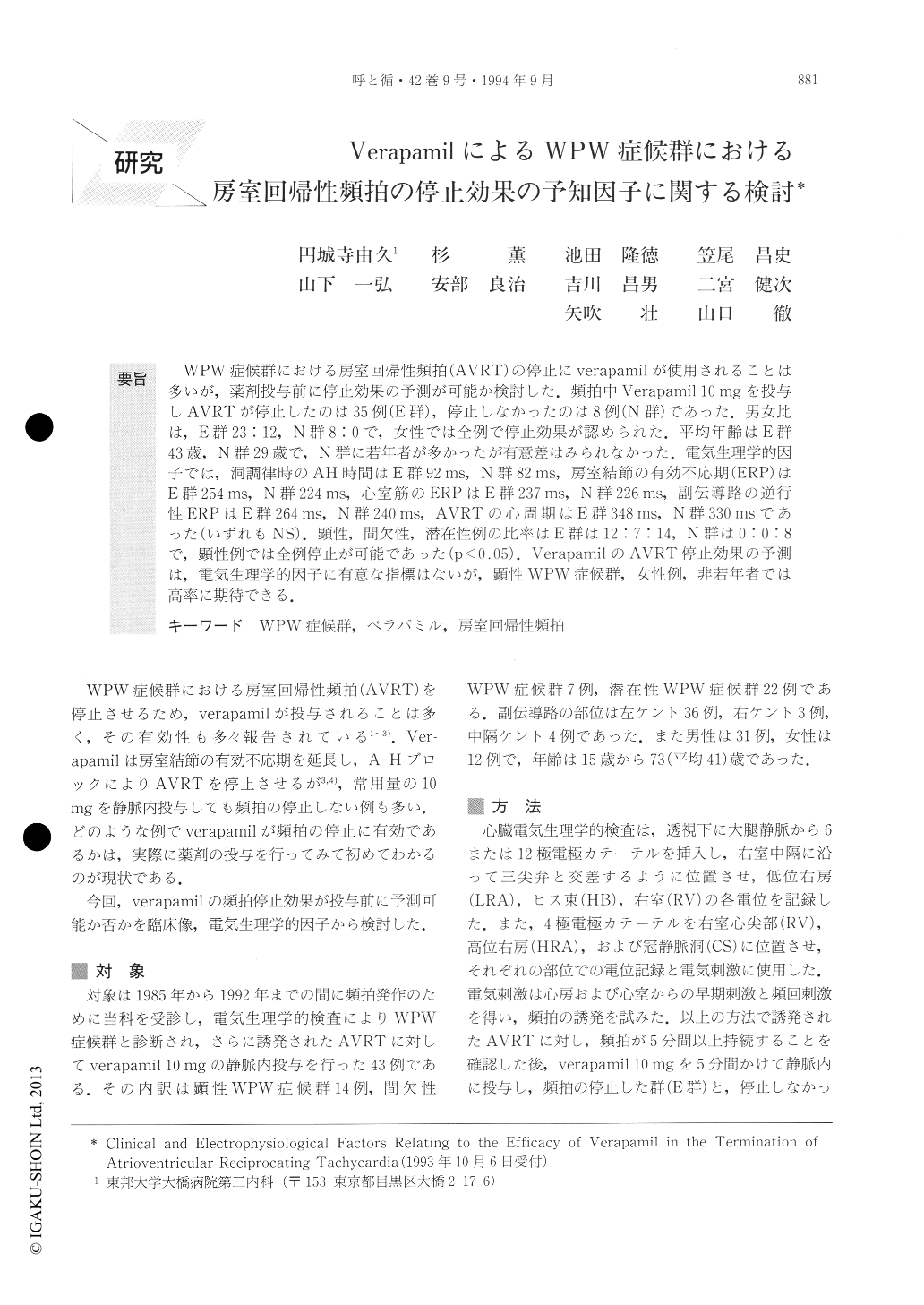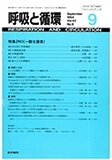Japanese
English
- 有料閲覧
- Abstract 文献概要
- 1ページ目 Look Inside
WPW症候群における房室回帰性頻拍(AVRT)の停止にverapamilが使用されることは多いが,薬剤投与前に停止効果の予測が可能か検討した.頻拍中Verapamil 10 mgを投与しAVRTが停止したのは35例(E群),停止しなかったのは8例(N群)であった.男女比は,E群23:12,N群8:0で,女性では全例で停止効果が認められた.平均年齢はE群43歳,N群29歳で,N群に若年者が多かったが有意差はみられなかった.電気生理学的因子では,洞調律時のAH時間はE群92ms,N群82ms,房結節の有効不応期(ERP)はE群254ms,N群224ms,心室筋のERPはE群237ms,N群226ms,副伝導路の逆行性ERPはE群264ms,N群240ms,AVRTの心周期はE群348ms,N群330msであった(いずれもNS).顕性,間欠性,潜在性例の比率はE群は12:7:14,N群は0:0:8で,顕性例では全例停止が可能であった(p<0.05).VerapamilのAVRT停止効果の予測は,電気生理学的因子に有意な指標はないが,顕性WPW症候群,女性例,非若年者では高率に期待できる.
Although verapamil is used to terminate an atrioventricular reciprocating tachycardia (AVRT), its efficacy is uncertain. The efficacy of verapamil and factors involved in the termination of orthodromic AVRT were evaluated during electrophysiological study in 43 patients diagnosed as WPW syndrome with documented AVRT. Intravenous verapamil (10 mg) terminated AVRT in 35 of the 43 patients (81%, group E), but not in the remaining 8 patients (19%, group N). AVRT was terminated by atrioventricular conductionblock in all 35 patients of group E, which included all 12 female patients in this study.

Copyright © 1994, Igaku-Shoin Ltd. All rights reserved.


